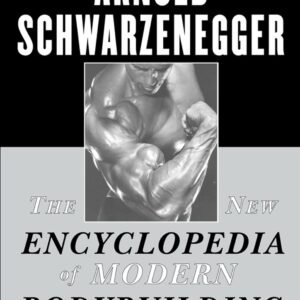Photo by RDNE Stock project on Pexels
Every successful business knows the value of a strong team. Labor hire agencies make it easier to find the right people, but it all hinges on one thing—a well-drafted agreement. One missed clause or unclear term can lead to disputes, compliance issues, or even legal trouble.
That’s why it’s so important to get it right from the start. In this article, we’ll break down the best practices for drafting labor hire terms and conditions, helping you avoid common pitfalls and set up partnerships that are built to last.
Let’s get going!
Understanding the Purpose of Labour Hire Agreements
Before diving into the details, let’s look at why these agreements matter. At their core, they set the rules for the relationship between the employer, agency, and worker. These documents outline what’s expected and help avoid confusion later.
A well-written agreement doesn’t just protect your business. It also sets the stage for trust and smooth operations. When everyone is on the same page, it’s easier to prevent disputes and manage responsibilities effectively.
Best Practices
Creating a solid agreement might feel daunting, but with the right steps, it can be straightforward. Let’s explore some essential practices to keep in mind.
One of the smartest moves you can make is to involve experienced legal professionals in your employment agreements. These experts don’t just help draft terms—they anticipate challenges you might not even think of. For instance, they’ll ensure your labor hire contract includes provisions for cost adjustments. This includes changes in award rates, superannuation contributions, or workers’ compensation premiums.
This attention to detail protects your margins and keeps your business compliant. Plus, having a reliable attorney means you’re covered for future updates or disputes. This makes them a long-term asset for your business.
- Use Simple, Clear Language:
No one wants to read a contract that feels like a puzzle. Using plain language makes your agreement easier for everyone involved to understand. Avoid jargon and write in a way that even someone without a legal background can follow.
Clear terms reduce confusion and ensure that expectations are met. For example, instead of writing “obligatory compliance standards,” say “safety rules that must be followed.” Simplicity keeps the focus on the agreement’s purpose.
Business needs and laws change over time. Contracts that worked last year may not fit today’s challenges. Regularly review your agreements to keep them up-to-date with regulations and market trends.
You might find new compliance rules or shifts in worker expectations. Staying proactive helps you stay ahead and ensures your agreement remains effective.
- Tailor Contracts to Industry Needs:
Every industry has its quirks. Whether you’re hiring for construction, healthcare, or retail, your terms should reflect specific requirements. A one-size-fits-all approach rarely works.
For example, in construction, clauses about safety and training might take precedence. In hospitality, flexibility in schedules could be more important. Customize your agreements to align with your industry’s demands.
- Foster Fairness and Balance:
Trust is at the heart of any good agreement. Ensure the terms are fair to everyone—employer, agency, and worker. Avoid clauses that feel one-sided or overly restrictive.
Balanced contracts help build long-term relationships. For instance, if workers feel respected and valued, they’re more likely to stay motivated and perform well. The same goes for your agency partners.
Common Pitfalls to Avoid
Even with the best intentions, it’s easy to make mistakes. Here are some common missteps to watch out for:
- Vague Terms: Ambiguity can lead to misunderstandings. Be specific about roles, responsibilities, and expectations.
- Ignoring Legal Compliance: Regulations can vary by region and industry. Failing to follow them can lead to penalties.
- Neglecting Dispute Resolution: Without clear steps for handling disagreements, minor issues can escalate quickly.
Avoiding these pitfalls is crucial to keeping your agreements effective and hassle-free.
Benefits of Well-Drafted Contracts
A strong agreement offers more than just peace of mind. It protects your business from risks and sets a foundation for smooth operations. Here’s what you gain with a solid contract:
- Clarity: Everyone knows their role, making day-to-day work seamless.
- Reduced Disputes: Clear terms prevent disagreements and foster better relationships.
- Legal Protection: By following regulations, you avoid fines and legal complications.
All in all, a well-drafted agreement doesn’t just benefit your business—it creates a win-win situation for everyone involved.
Final Thoughts
Drafting effective terms and conditions doesn’t have to be overwhelming. With the right steps, you can create agreements that protect your business, meet legal standards, and foster strong partnerships.
Remember to involve experts, keep the language simple, and tailor your terms to your industry. When done right, these agreements become tools for building trust and achieving success. Take the time to get it right. It’s worth the effort.
Full disclosure: She Owns It partners with others through contributor posts, affiliate links, and sponsored content. We are compensated for sponsored content. The views and opinions expressed reflect those of our guest contributor or sponsor. We have evaluated the links and content to the best of our ability at this time to make sure they meet our guidelines. As links and information evolve, we ask that readers do their due diligence, research, and consult with professionals as needed. If you have questions or concerns with any content published on our site, please let us know. We strive to only publish ethical content that supports our community. Thank you for supporting the brands that support this blog.



















Leave a Reply